|
Related FAQs: Faviids, Faviids
2, Faviids 3, Faviid Identification, Faviid Behavior, Faviid Compatibility, Faviid Selection, Faviid Systems, Faviid Feeding, Faviid Disease, Faviid Disease 2,
Faviid Disease 3,
Faviid Disease 4, Faviid Disease 5, & Faviid
Reproduction/Propagation,
Stony/True Coral,
Coral System Set-Up, Coral System Lighting, Stony Coral Identification, Stony Coral Selection, Coral Placement, Foods/Feeding/Nutrition, Disease/Health, Propagation, Growing Reef Corals, Stony Coral Behavior,
Related Articles: Large Polyp Stony
Corals, Stony or True Corals,
Order Scleractinia, Dyed
Corals,
/The Best Livestock For Your Reef Aquarium:
"Honeycomb", Brain Corals,
More and Less, Family Faviidae, pt. 3
To: Part
1, Part 2,
Part 4, Part 5,
Part 6, Part 7,
Part 8
|
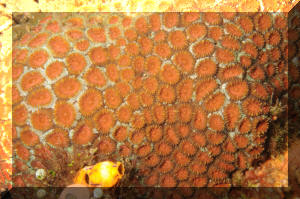
|
|
By Bob Fenner
|
Gorgeous orange Faviid in N.
Sulawesi |
Genus Echinopora Lamarck 1816. As per the name, prickly in appearance
(raised corallites, spiny septa). Mostly wavy laminar sheets
that appear wavy on their ends. (This genus moved to family
Merulinidae in recent years. See there as well)
/WA Corals: massive, laminar, encrusting or branching • corallites have
own walls • septa exsert and dentate • spines on coenosteum • coraliltes are
similar to Cyphastrea but larger >10mm
Bigger PIX:
The images in this table are linked
to large (desktop size) copies. Click on "framed" images
to go to the larger size. |
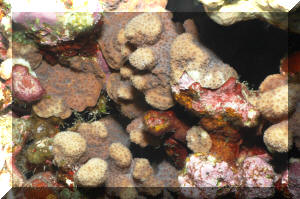 |
| Echinopora lamellosa (Esper 1795). Thin,
wavy laminar sheets. Small corallites (3-4mm.). Indo-Central
Pacific including the Red Sea. Bunaken, Sulawesi, Indonesia
image. |
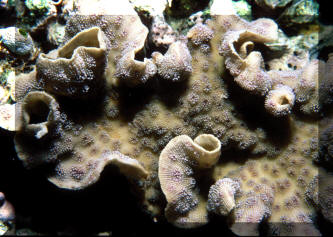
|
Bigger PIX:
The images in this table are
linked to large (desktop size) copies. Click on "framed"
images to go to the larger size. |
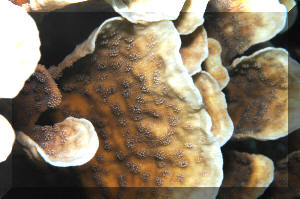 |
Genus Favia Oken 1815. One of the most widely distributed (though not
that common) genera of stony corals. Most corallites circular, uniform in
appearance. Plocoid (corallites that are conical with their own walls). Septa
alternating in size, dentate edges. Genus
and family named for Greek: "Honeycomb" (favus) which the regular size,
arrangement of corallites approaches. Encrusting, columnar or massive
colonies.
Bigger PIX:
The images in this table are linked to large (desktop size) copies. Click on
"framed" images to go to the larger size. |
|
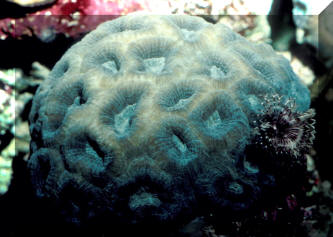
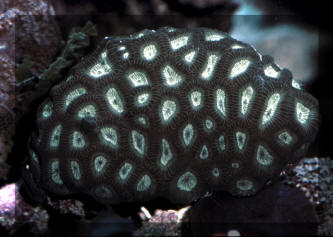
|
| Favia albidus Veron 2000. Usually small, rounded
colonies. Corallites crowded, monocentric with thickened septa which extend
as large teeth over the corallite wall. Red Sea endemic. |
|
| Favia fagrum (Esper 1797). Small colonies that may be
encrusting or hemispherical. Corallites of variable shape, with one to many
mouths. Bahamas and aquarium images. |
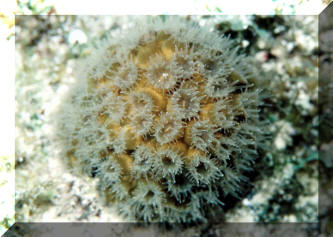
|
| Favia favus (Forskaal 1775). Massive or flat
colonies. Slightly irregular, conical corallites of about 12 mm diameter. N.
Sulawesi images. |
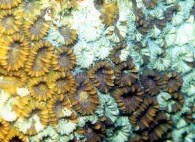 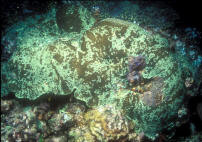
|
Bigger PIX:
The images in this table are linked to large (desktop size) copies. Click on
"framed" images to go to the larger size. |
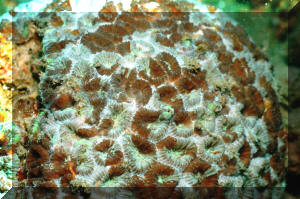 |
| Favia laxa (Klunzinger 1879). Hemispherical colonies
whose corallites are conical, showing both extra- and intertentacular
budding. Paliform lobes look like an internal crown. Fine line of
demarcation between costae. Pale to pinkish brown in color. Common in the
Red Sea where this picture was made. |
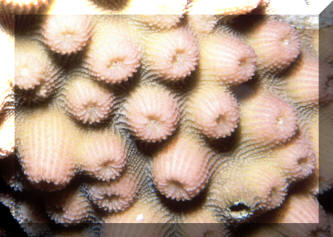
|
| Favia matthai Vaughan 1918. Small, massive colonies.
Corallites circular, rounded with regular, thick septal teeth. Crown-like
paliform lobing between the corallites. Usually brown or grey w/ contrasting
walls. Bali 2014 |
%20MD.JPG)
|
Bigger PIX:
The images in this table are linked
to large (desktop size) copies. Click on "framed" images
to go to the larger size. |
|
%20MD.JPG)
|
Favia maxima Veron and Pichon 1977. Small, massive
colonies. Corallites with regular, thick septa. Crown-like paliform lobing
between the corallites. Cebu, Philippines image.
According to Joe Fish, Dipsastrea sp. Fam. Merulinidae. |
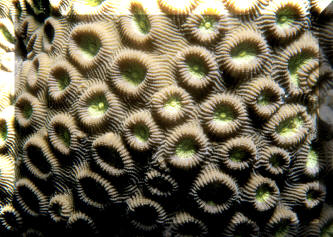
|
|
|

